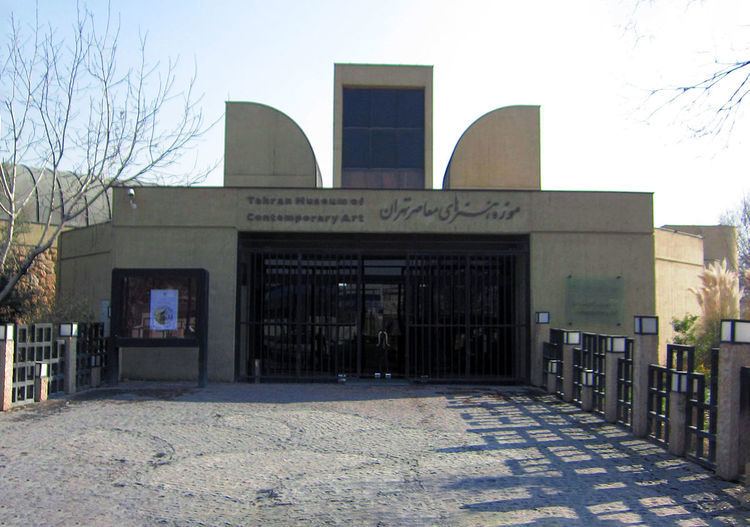Established 1977 Type Art Museum Website www.tmoca.com/home/ | Location Laleh ParkTehranIran Director Majid Mola-Nourozi Phone +98 21 8898 9374 | |
 | ||
Hours Open today · 10AM–6PMTuesday10AM–6PMWednesday10AM–6PMThursday10AM–6PMFriday(Islamic Republic Day)3–7PMHours might differSaturday(Islamic Republic Day)ClosedSunday10AM–6PMMonday10AM–6PMSuggest an edit Similar Carpet Museum of Iran, National Museum of Iran, Golestan Palace, Laleh Park, Sa'dabad Complex Profiles | ||
Tehran museum of contemporary art by dr ata omidvar
Tehran Museum of Contemporary Art, (Persian: موزه هنرهای معاصر تهران), also known as TMoCA, is among the largest art museums in Iran. It has collections of more than 3000 items that include 19th and 20th century's world-class European and American paintings, prints, drawings and sculptures. TMoCA also has one of the greatest collections of Iranian modern and contemporary art.
Contents
- Tehran museum of contemporary art by dr ata omidvar
- Tehran museum of contemporary art exhibition of calligraphy painting by jalil rasouli august 2009
- Background
- Criticism
- Artists represented
- References
The museum was inaugurated by Empress Farah Pahlavi in 1977, just two years before the 1979 Revolution. TMoCA is considered to have the most valuable collections of modern Western masterpieces outside Europe and North America.
Tehran museum of contemporary art exhibition of calligraphy painting by jalil rasouli august 2009
Background
The museum was designed by Iranian architect Kamran Diba, who employed elements from traditional Persian architecture. It was built adjacent to Laleh Park, Tehran, and was inaugurated in 1977. The building itself can be regarded as an example of contemporary art, in a style of an underground New York Guggenheim Museum.
Most of the museum area is located underground with a circular walkway that spirals downwards with galleries branching outwards. Western sculptures by artists such as Ernst, Giacometti, Magritte and Moore can be found in the museum's gardens.
After the Iranian Revolution in 1979, the Western art was stored away in the museums vault until 1999 when the first post-revolution exhibition was held of western art showing artists such as Hockney, Lichtenstein, Rauschenburg and Andy Warhol. Now pieces of the Western art collection are shown for a few weeks every year but due to conservative nature of the Iranian establishment, most pieces will never be shown.
It is considered to have the most valuable collection of Western modern art outside Europe and the United States, a collection largely assembled by founding curators David Galloway and Donna Stein under the patronage of Farah Pahlavi. It is said that there is approximately £2.5 billion worth of modern art held at the museum. The museum hosts a revolving programme of exhibitions and occasionally organises exhibitions by local artists.
A touring exhibitions was planned for autumn 2016 in Berlin, Germany, consisting of a three-month tour of sixty artworks, half Western and half Iranian. The show was to run for three months in Berlin, then travel to the Maxxi Museum of 21st Century Arts in Rome for display from March through August. However, the plan has been indefinitely postponed because the Iranian authorities have failed to allow the paintings to leave the country. Also in 2017, a larger touring exhibition is planned for the Hirshhorn Museum in Washington, D.C. It is hoped that revenue from these tours will allow the museum to upgrade the infrastructure as well as purchase new art, something it hasn't done for over forty years.
Criticism
Purchasing expensive art work and opening the contemporary art museum in Tehran by the empress was a controversial topic at the day in 1977, as social and economic inequalities were rising and the government was a dictatorship not tolerating the rising opponents. Le Monde art critic André Fermigier wrote an article called "A museum for whom and for what?", "questioning the link between an Iranian child and a Picasso or a Pollock".
